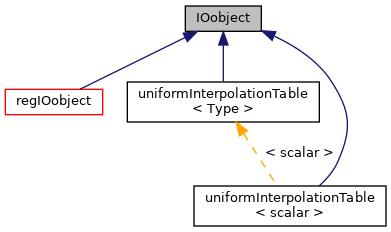对于openfoam或其他c++程序而言,文件的读取是尤为重要的
我们最开始学习C++时,会学到类的初始化,或者是变量定义为某个值,再对某个值进行遍历,,,
类似如下:
点击查看代码
#include <iostream> // 包含头文件。
using namespace std; // 指定缺省的命名空间。
int main()
{
int a = 10;
int b = (10);
int c(10);
int e = {10};
int f{ 10 };
cout << "a=" << a << endl;
cout << "b=" << b << endl;
cout << "c=" << c << endl;
cout << "e=" << e << endl;
cout << "f=" << f << endl;
}
尤其c++,初学时候内心非常感慨,怎么这么多初始化方式,我该用哪个
现在回头看,其实能熟悉一个,其他看懂就行,看不懂都没关系,毕竟我们还有gdb或者typeid()帮忙,可以看看这个变量类型具体是什么
说到底我们要问题导向目标导向,我们学习C++是为了类似openfoam这样的大工程服务的
那学这么多初始化赋值,有必要吗
如果是个大工程或者大程序是完全没必要的,
因为大工程的数据都是从文件或者数据库中获得的
你想想,要计算一个流体问题,如果有一万个网格,手打一万个三维位置就已经非常让人头疼了,更不要说上百个组分和压力等参数了,不现实
所以又回到了问题的起点,读取文件很重要,那么如何从文件中初始化程序,如何读取文件
在看of源码之前,不妨复习下C++是怎么读取文件的,进行下知识巩固
C++多使用fstream类或ifstream类
点击查看代码
#include <iostream>
#include <fstream> // ifstream类需要包含的头文件。
#include <string> // getline()函数需要包含的头文件。
using namespace std;
int main()
{
string filename = R"(./test.txt)";
//ifstream fin(filename, ios::in);
ifstream fin;
fin.open(filename , ios::in);
// 判断打开文件是否成功。
// 失败的原因主要有:1)目录不存在;2)文件不存在;3)没有权限,Linux平台下很常见。
if (fin.is_open() == false)
{
cout << "打开文件" << filename << "失败。\n"; return 0;
}
string buffer;
while (fin >> buffer)
{
cout << buffer << endl;
}
fin.close(); // 关闭文件,fin对象失效前会自动调用close()。
cout << "操作文件完成。\n";
}
OPENFOAM的文件读写,主要是用IOdictionary类
打开IOdictionary类的头文件,并不复杂
点击查看代码
class IOdictionary
:
public baseIOdictionary
{
public:
// Constructors
//- Construct given an IOobject
IOdictionary(const IOobject&);
//- Construct given an IOobject and dictionary
IOdictionary(const IOobject&, const dictionary&);
//- Construct given an IOobject and Istream
IOdictionary(const IOobject&, Istream&);
//- Copy constructor
IOdictionary(const IOdictionary&);
//- Move constructor
IOdictionary(IOdictionary&&);
//- Destructor
virtual ~IOdictionary();
// Member Functions
//- Is object global
virtual bool global() const
{
return true;
}
//- Return complete path + object name if the file exists
// either in the case/processor or case otherwise null
virtual fileName filePath() const
{
return globalFilePath(type());
}
// Member Operators
//- Move assignment
void operator=(IOdictionary&&);
};
继承于baseIOdictionary类,借助于IOobject接口有五个构造函数,这五个中一个移动构造一个拷贝构造,其他类继承可以创建自己成员函数global()和filePath(),头文件还对移动构造创建了等号赋值运算符
我们再看IOdictionary类的关键先生IOobject
IOobjectIOobject就稍显复杂了,我们先看openfoam对其的描述:
IOobject defines the attributes of an object for which implicit objectRegistry management is supported, and provides the infrastructure for performing stream I/O.
An IOobject is constructed with an object name, a class name, an instance path, a reference to a objectRegistry, and parameters determining its storage status.
下面这张图是openfoam与该接口有关的类谱图

打开regIOobject类,这是个抽象类,openfoam对regIOobject的描述为:
regIOobject is an abstract class derived from IOobject to handle automatic object registration with the objectRegistry.
刨根问底,那么再继续看IOobject类,openfoam对IOobject类的描述为:
IOobject defines the attributes of an object for which implicit objectRegistry management is supported, and provides the infrastructure for performing stream I/O.
An IOobject is constructed with an object name, a class name, an instance path, a reference to a objectRegistry, and parameters determining its storage status.
看到这里,可能你都忍不住要吐槽一句,这么溯源什么时候是头
刨根问底刨个稀烂,知道结果明年再见
是的,openfoam征程就是这么快乐,快乐的我现在看起来略显迷茫
这里不赘述了,最后查了好半天,大概是哈希表来的,方便查询读取。openfoam中/0,/constant以及/system文件夹中那种奇怪的文件格式肯定有适合自己的读取方法。
那我们看看IOobject类相关源码,
IOobject类有四个枚举控制读取权限以及文件检查
点击查看代码
//- Enumeration defining the valid states of an IOobject
enum objectState
{
GOOD,
BAD
};
//- Enumeration defining the read options
enum readOption
{
MUST_READ,
MUST_READ_IF_MODIFIED,
READ_IF_PRESENT,
NO_READ
};
//- Enumeration defining the write options
enum writeOption
{
AUTO_WRITE = 0,
NO_WRITE = 1
};
//- Enumeration defining the file checking options
enum fileCheckTypes
{
timeStamp,
timeStampMaster,
inotify,
inotifyMaster
};
内共有六个构造函数,其中一个拷贝构造
点击查看代码
// Constructors
//- Construct from name, instance, registry, io options
IOobject
(
const word& name,
const fileName& instance,
const objectRegistry& registry,
readOption r=NO_READ,
writeOption w=NO_WRITE,
bool registerObject=true
);
//- Construct from name, instance, local, registry, io options
IOobject
(
const word& name,
const fileName& instance,
const fileName& local,
const objectRegistry& registry,
readOption r=NO_READ,
writeOption w=NO_WRITE,
bool registerObject=true
);
//- Construct from path, registry, io options
// Uses fileNameComponents() to split path into components.
IOobject
(
const fileName& path,
const objectRegistry& registry,
readOption r=NO_READ,
writeOption w=NO_WRITE,
bool registerObject=true
);
//- Construct from copy resetting registry
IOobject
(
const IOobject& io,
const objectRegistry& registry
);
//- Construct from copy resetting name
IOobject
(
const IOobject& io,
const word& name
);
//- Copy constructor
IOobject(const IOobject& io) = default;
我们举个例子,基于这些构造函数可以这样写类似这样的读取端口:
点击查看代码
IOobject dicName(
"dicName",
runTime.timeName(),
//runTime.constant(),
mesh,
IOobject::MUST_READ,
IOobject::AUTO_WRITE
) ;
再回到IOdictionary类,
通过查看IOdictionary类的构造函数,我们了解到可以在创建好的IOobject端口基础上构建,也可以直接构建IOobject端口
点击查看代码
IOdictionary dicName(
IOobject (
"dicName",
//runTime.constant(),
runTime.system(),
mesh,
IOobject::MUST_READ,
IOobject::AUTO_WRITE
)
) ;
那么我们如何通过IOdictionary类读取openfoam内文件呢,
以openfoam内置icoFoam为例
$ ls cavity/
0 constant system
$ tree cavity/
cavity/
├── 0
│ ├── U
│ └── p
├── constant
│ ├── polyMesh
│ │ ├── boundary
│ │ ├── faces
│ │ ├── neighbour
│ │ ├── owner
│ │ └── points
│ └── transportProperties
└── system
├── blockMeshDict
├── controlDict
├── fvSchemes
└── fvSolution
$ head cavity/0/* -n15
-
cavity/0/U *
/--------------------------------- C++ -----------------------------------
========= |
\ / F ield | OpenFOAM: The Open Source CFD Toolbox
\ / O peration | Website: https://openfoam.org
\ / A nd | Version: 8
\/ M anipulation |
*---------------------------------------------------------------------------*/
FoamFile
{
version 2.0;
format ascii;
class ** volVectorField;**
object U;
}
// * * * * * * * * * * * * * * * * * * * * * * * * * * * * * * * * * * * * * // -
cavity/0/p *
/--------------------------------- C++ -----------------------------------
========= |
\ / F ield | OpenFOAM: The Open Source CFD Toolbox
\ / O peration | Website: https://openfoam.org
\ / A nd | Version: 8
\/ M anipulation |
*---------------------------------------------------------------------------*/
FoamFile
{
version 2.0;
format ascii;
class ** volScalarField;**
object p;
}
// * * * * * * * * * * * * * * * * * * * * * * * * * * * * * * * * * * * * * //
从以上内容可以看到,U和v分别属于volVectorField类以及volScalarField类,那么就利用IOobject接口分别创建相关类如下所示:
点击查看代码
volVectorField U(
IOobject(
"U" ,
runTime.timeName() ,
mesh ,
IOobject::MUST_READ ,
IOobject::AUTO_WRITE
) ,
mesh
);
volScalarField p(
IOobject(
"p" ,
runTime.timeName() ,
mesh ,
IOobject::MUST_READ ,
IOobject::AUTO_WRITE
) ,
mesh
);
再看其他两个文件夹
$ grep -rn "dicti" .
./cavity/constant/transportProperties:12: class dictionary;
./cavity/system/controlDict:12: class dictionary;
./cavity/system/fvSolution:12: class dictionary;
./cavity/system/blockMeshDict:12: class dictionary;
./cavity/system/fvSchemes:12: class dictionary;
./constant/transportProperties:12: class dictionary;
./system/controlDict:12: class dictionary;
./system/fvSolution:12: class dictionary;
./system/blockMeshDict:12: class dictionary;
./system/fvSchemes:12: class dictionary;
都是dictionary类,那创建起来更方便了,比如说contorlDict文件
点击查看代码
IOdictionary controlDict(
IOobject (
"controlDict",
runTime.constant(),
//runTime.system(),
mesh,
IOobject::MUST_READ,
IOobject::AUTO_WRITE
)
) ;
有了dictionary这个字典类,顾名思义,字典当然是很方便查找啊,而且本身也是在链表以及哈希列表基础上建立的,能用的函数就很丰富了,如lookup()等。
综上,openfoam创建了一个读取方便查找容易的类支持of进行数据处理,寻根溯源很麻烦,但是用起来还是很简单的。
正因为文件读取占用很大的比重,这篇文章写了三个多小时,我们也是借此机会对openfoam内部略窥一二,这样我们就知道我们的程序在写什么,知道其所能为与不能为。
最后奉上自己编写的openfoam codesnip ,节约大家时间
点击查看代码
//***********************************************//
//openfoam
"Foam_IOobject": {
"prefix": "IOobject_Foam_",
"body": [
"IOobject ${1|U,p,T,dicName|}(",
// "\t${2|\"U\",\"p\",\"T\"|}",
"\t\"${1}\",",
"\t//runTime.timeName(),",
"\t//runTime.constant(),",
"\tmesh,",
"\tIOobject::MUST_READ,",
"\tIOobject::AUTO_WRITE",
") ;"
],
"description": "FOAM::IOobject"
},
"Foam::IOdictionary": {
"prefix": "IOdictionary_Foam_",
"body": [
"IOdictionary ${1:dicName}(",
"\tIOobject (",
// "\t${2|\"U\",\"p\",\"T\"|}",
"\t\t\"${1}\",",
"\t\t//runTime.constant(),",
"\t\t//runTime.system(),",
"\t\tmesh,",
"\t\tIOobject::MUST_READ,",
"\t\tIOobject::AUTO_WRITE",
"\t)",
") ;"
],
"description": "Foam::IOdictionary"
},
"Foam::volVectorField": {
"prefix": "volVectorField_Foam_",
"body": [
"volVectorField ${U}(",
"\tIOobject (",
"\t\t\"${U}\",",
"\t\trunTime.timeName(),",
"\t\tmesh,",
"\t\tIOobject::MUST_READ,",
"\t\tIOobject::AUTO_WRITE",
"\t),",
"\tmesh",
") ;"
],
"description": "Foam::volVectorField"
},
"Foam::volScalarField": {
"prefix": "volScalarField_Foam_",
"body": [
"volScalarField ${p}(",
"\tIOobject (",
"\t\t\"${p}\",",
"\t\trunTime.timeName(),",
"\t\tmesh,",
"\t\tIOobject::MUST_READ,",
"\t\tIOobject::AUTO_WRITE",
"\t),",
"\tmesh",
") ;"
],
"description": "Foam::volScalarField"
},
"Foam::scalar": {
"prefix": "scalar",
"body": [
"scalar "
],
"description": "Foam::scalar"
},
//***********************************************//
创作不易,如若喜欢,不胜感激,欢迎支持,欢迎指正
